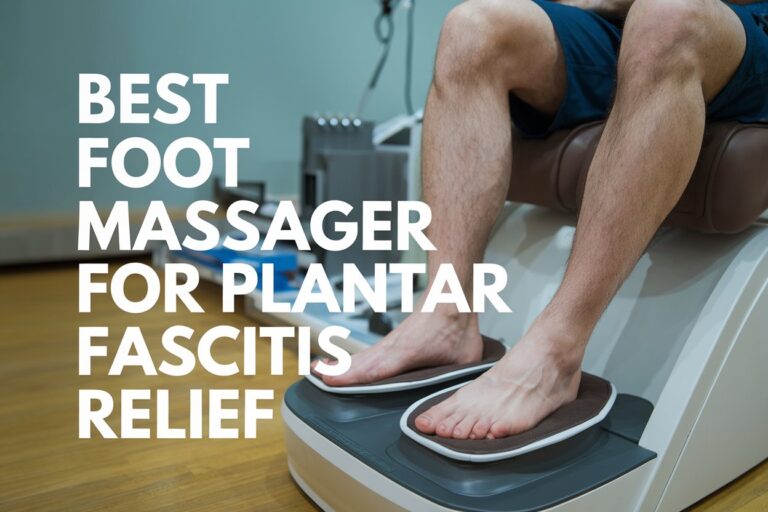Plantar Fascia Tear vs Rupture: Key Differences

Imagine a jogger feeling great after a personal best, then feeling a sharp pain from heel to arch. After weeks of pain, they see a specialist and learn it’s not just plantar fasciitis. They have a partial tear in the plantar fascia. Knowing the difference between a plantar fascia tear vs rupture is key for treatment and recovery.
Many know about plantar fasciitis, but not all understand the range of injuries. From minor tears to full ruptures, the differences between plantar fasciitis and plantar fascia tear can be confusing. It’s important to know these differences for the right diagnosis and treatment of a plantar fascia injury.
This article will explain the main differences between a plantar fascia tear and rupture. Early recognition is crucial for better health outcomes. Whether you’re an athlete, a casual walker, or always on your feet, knowing these injuries can help a lot.
Table of Contents
Understanding the Plantar Fascia
The plantar fascia is a key part of the foot. It’s a thick band of tissue that runs from the heel bone to the toes. This tissue is important because it helps keep the foot’s arch in shape and absorbs shock when you walk or run. Knowing about the plantar fascia helps us understand how it supports the foot’s movement and health.
This tissue supports and stabilizes the foot by linking the heel to the toes. It helps spread the weight evenly across the foot. Keeping the plantar fascia healthy is crucial because problems here can lead to plantar fasciitis. This condition affects many people, making it a big issue for those who are active.
“The plantar fascia is capable of stretching only 4-5% before tearing, which makes it vulnerable during activities that apply excessive strain.”
The plantar fascia faces a lot of stress every day, stretching and pulling thousands of times. If it’s put under too much strain, it can tear or rupture. This can cause a lot of pain and make it hard to move.
| Aspect | Details |
|---|---|
| Prevalence of Heel Pain | Approximately 10% of Americans suffer from heel pain. |
| Common Causes | Plantar fasciitis ranks #3 in running-related injuries. |
| Tissue Characteristics | The plantar fascia stretches only 4-5% before compromising integrity. |
| Tensile Stress | Placed under tension 5,000 to 10,000 times daily. |
| Treatment Outcomes | 85% of patients improve without surgery within 3 months. |
It’s important to take good care of the plantar fascia for foot health. Taking steps to prevent injuries and watching for early signs can really help. This can make moving around easier and improve your life.
The Importance of Plantar Fascia in Foot Function
The plantar fascia plays a key role in foot mechanics. It helps absorb shock and keeps the foot stable during movement. This tissue is crucial for keeping the arch of the foot strong, preventing it from collapsing under weight. It’s essential for smooth movements in activities like walking, running, and jumping.
Plantar fascia injuries can seriously affect foot function. In the U.S., about 1 million people visit doctors each year for these issues. This problem is a big concern for runners and impacts their daily activities too.
When the plantar fascia gets hurt, it can lead to flat feet. Studies show that plantar fasciitis affects 10% of people, especially those aged 40 to 60. Keeping the plantar fascia healthy is key to avoiding pain and staying mobile.
A healthy plantar fascia lets people move easily and comfortably. It’s important to treat injuries quickly to keep the foot working right. This helps maintain overall health and avoids more problems.
Common Causes of Plantar Fascia Injuries
Understanding the causes of plantar fascia injuries is key for foot health. These injuries often come from overusing your feet. Running can put a lot of strain on the plantar fascia. People between 40 and 60 are more likely to get plantar fasciitis as they age.
Wearing the wrong shoes is another big risk. Shoes without good arch support can make plantar fascia problems worse. Being overweight also raises the risk of plantar fasciitis. This is because extra weight puts more stress on your feet.
How your feet work can also lead to plantar fascia injuries. If you have high arches or flat feet, you might be more prone to these issues. Jobs that make you stand for a long time can also make these problems worse.
| Causes of Plantar Fascia Injuries | Description |
|---|---|
| Overuse | Excessive strain from high-impact activities like running and jumping. |
| Improper Footwear | Shoes lacking proper arch support, increasing stress on the foot. |
| Age | Individuals aged 40 to 60 are at a higher risk of developing plantar fasciitis. |
| Obesity | Excess weight adds strain, predisposing individuals to plantar fascia injuries. |
| Biomechanical Issues | Foot structures such as high arches or flat feet can contribute to injury risk. |
| Prolonged Standing | Occupations requiring long hours on feet increase the risk of injury. |
Knowing these factors can help prevent injuries. Think about your activities, what shoes you wear, and how your feet work. This can lower the chance of getting plantar fasciitis.
Identifying Symptoms of a Plantar Fascia Tear
Knowing the signs of a plantar fascia tear is key to getting better and finding the right treatment. It helps tell it apart from plantar fasciitis. People often feel sudden pain and swelling where it hurts.
Sharp Pain during Activity
Many feel sharp pain in the heel or arch when they move. This pain can make walking, running, or playing sports hard. If you’re active and feel this pain, you might have a tear that needs help.
Local Swelling and Bruising
Along with sharp pain, there might be swelling and bruising nearby. This shows the tissue is hurt. It makes moving around harder and hurts more. Seeing a doctor is important to get the right treatment plan. Waiting too long can make healing take longer.
Getting medical help is a good idea if these signs don’t go away or get worse. Starting treatment early can lead to faster recovery and better plantar fasciitis care.
Recognizing Symptoms of a Plantar Fascia Rupture

A plantar fascia rupture is a serious injury. It’s important to know the signs to get help quickly. People with this condition often feel sudden, severe foot pain and find it hard to bear weight.
Sudden Onset of Severe Pain
Those with a plantar fascia rupture feel sharp pain right away. This pain can happen suddenly while doing activities like running or jumping. Sometimes, you might hear a *popping* sound, which means a big injury has occurred.
The pain is very intense and gets worse with activities that stress the foot.
Difficulty Bearing Weight
After a rupture, many people have trouble bearing weight on their foot. This is because of the sharp pain they feel. Walking becomes hard, showing the need for quick medical help.
Knowing these symptoms is key to getting the right treatment from doctors.
Plantar Fascia Tear vs Rupture: Key Differences
Knowing the difference between a plantar fascia tear and rupture is key for the right treatment. A tear usually causes sharp pain during activity, making everyday tasks hard. This is less severe than a rupture, which means the tissue has fully failed.
A plantar fascia injury comparison shows tears have swelling and bruising near the heel. Ruptures cause intense pain that makes walking or standing hard. This helps doctors create the right treatment plans.
Doctors use physical exams and sometimes imaging to diagnose these injuries. Spotting the problem early helps in choosing the right treatment. For tears, this might mean rest, ice, and not moving much. Ruptures might need surgery.
Knowing if it’s a tear or a rupture helps doctors give the right care. This ensures patients get the right treatment for their injury. For more on managing pain and health, check out this resource.
Diagnosing a Plantar Fascia Injury
Getting a plantar fascia injury diagnosed right is key to getting better. It starts with a detailed check-up to see where it hurts, how the foot moves, and the patient’s health history. Often, up to 50% of these injuries are wrongly thought to be plantar fasciitis because the symptoms are similar. Spotting the difference is crucial for the right treatment.
Physical Examination Techniques
The check-up for plantar fasciitis includes several steps:
- Assessing where the pain is helps understand the problem better.
- Tests how well the foot moves to find any injury-related limits.
- Watching how the patient walks can show how they’re trying to avoid pain.
After this, imaging studies might be the next step.
Imaging Studies: When and Why
Imaging is important to confirm a plantar fascia tear. Doctors might suggest:
| Imaging Test | Purpose | Limitations |
|---|---|---|
| X-ray | To check for bone fractures. | It doesn’t show soft tissue damage well. |
| Musculoskeletal Ultrasound (MSKUS) | To see the plantar fascia for swelling or tears. | It depends on the person doing the scan; not always accurate. |
| MRI | To look at soft tissue injuries in detail. | It’s not always clear-cut for plantar fasciitis or tears. |
Getting images early helps spot problems fast, especially if it’s a severe tear. This is key because these tears can take a long time to heal. They might need strong treatments and can take weeks or even months to fix.
Initial Treatment for Plantar Fascia Injuries
The first steps in treating a plantar fascia injury are key to getting better and feeling less pain. Experts often suggest the RICE method. This means Rest, Ice, Compression, and Elevation. It helps with swelling and pain, making it easier to get back to normal.
RICE Protocol: Rest, Ice, Compression, Elevation
The RICE method works well in the early stages of a plantar fascia injury. Following this plan can speed up healing. Here’s what each part of the RICE method does:
- Rest: Stay off your feet to let the plantar fascia heal.
- Ice: Use ice packs on the hurt area for 15 to 20 minutes every hour. It reduces swelling and eases pain.
- Compression: Wear supportive wraps or bandages for gentle compression. This helps shrink swelling and gives support.
- Elevation: Keep your injured foot higher than your heart. It helps lessen swelling in the first few days after the injury.
Medication for Pain Relief
Over-the-counter drugs like ibuprofen or naproxen can help with plantar fasciitis pain. These drugs, known as NSAIDs, reduce pain and swelling. Always take them as directed on the label or by a doctor.
| RICE Method Component | Purpose | Recommended Duration |
|---|---|---|
| Rest | Prevents further injury | As needed for several days |
| Ice | Reduces swelling and pain | Every hour for 15-20 minutes for 3-5 days |
| Compression | Minimizes swelling | As needed for support |
| Elevation | Reduces swelling | As needed, especially for the first 2-3 days |
Starting with the RICE method quickly is key to healing from plantar fasciitis pain. Adding the right medication helps too. This combo makes it easier to get back to your daily life faster.
Specific Treatment for Plantar Fascia Tear
Managing a plantar fascia tear needs a special approach. A mix of physical therapy, orthotics, and support devices is key. With the right treatment, people can heal well and get back to normal activities easily.
Physical Therapy Interventions
Physical therapy helps make the affected area strong and flexible again. It includes:
- Stretching exercises to make the plantar fascia more flexible.
- Strengthening exercises for ankle stabilizers and nearby muscles.
- Gait analysis to fix any bad movement patterns that caused the injury.
Doing these exercises for 6–8 weeks safely gets you back to normal activities. Sometimes, advanced treatments like Platelet-Rich Plasma (PRP) injections are used. They help heal faster and lower the chance of getting hurt again.
Use of Orthotics and Support Devices
Along with physical therapy, using orthotics for plantar support is crucial. Custom foot orthotics give better arch support and spread out the weight from the injured spot. They offer many benefits:
- Improved stability when walking or running.
- Less pain during movement.
- Less stress and strain on the plantar fascia.
Using the right orthotics can greatly lessen pain and help with healing. Many people see the best results by combining physical therapy and custom orthotics. This approach helps with long-term recovery and health.
Management of Plantar Fascia Rupture
Dealing with a plantar fascia rupture needs a full plan, especially for serious cases that might need surgery. The goal is to help healing happen well and avoid extra problems. This is because healing from such injuries can be tough.
Possible Need for Surgical Intervention
Usually, treatment starts with simple steps like rest, ice, and keeping the foot still. Surgery might be looked at if these steps don’t help after a while. Doctors use scans to see how bad the injury is before deciding on surgery.
- Big tears might need a close check to think about surgery.
- Most of the time, not using surgery helps with the pain.
- But surgery for foot injuries is rare because it can cause scars and other issues.
Recovery and Rehabilitation Process
Getting better after a plantar rupture takes time and focuses on making the foot work right again. It can take up to a year, with regular check-ups and physical therapy. Key parts of getting better include:
- Doing exercises to make the muscles strong again.
- Starting with easy exercises and slowly adding more.
- Watching how you feel and changing the plan if needed.
New treatments like PRP injections might help during recovery. Talking often with your doctor makes sure you’re on the right path to get better. For more info on health topics, check out this link.
| Management Strategy | Purpose | Remarks |
|---|---|---|
| Rest and Ice | Reduce inflammation and pain | First step to ease the pain |
| Immobilization | Stabilize the foot | Helps prevent more injury |
| Physical Therapy | Rebuild strength and flexibility | Important for full recovery |
| Surgery | Repair severe ruptures as a last resort | Used only if other methods don’t work |
Prevention Strategies for Plantar Fascia Injuries
To prevent plantar fascia injuries, it’s important to take proactive steps. This includes doing exercises and wearing the right shoes. By doing these things, you can keep your feet healthy and lower your chance of getting hurt.
Stretching and Strengthening Exercises
Regular exercises help keep your foot muscles flexible and strong. This is key for the plantar fascia. Here are some exercises you should do:
- Calf Stretches: Stretching your calf muscles helps ease tension on the plantar fascia.
- Achilles Tendon Stretches: This strengthens the area that supports your whole foot.
- Plantar Fascia Stretches: Pull your toes to stretch the plantar fascia and make your foot more resilient.
Studies show that stretching helps people feel better. Stretching every day can really help prevent plantar fascia injuries.
Importance of Proper Footwear
Wearing the right shoes is key to preventing plantar fascia injuries. The right shoes keep your foot in the right position and stable. Look for shoes with these features:
| Feature | Description |
|---|---|
| Arch Support | Ensures even weight distribution across the foot. |
| Cushioning | Absorbs shock and reduces impact on the plantar fascia. |
| Heel Height | A moderate heel height maintains good foot position. |
| Roomy Toe Box | Allows the toes to splay naturally, avoiding pressure points. |
Shoes with these features help prevent plantar fascia injuries. They are especially good for people who often have foot problems.
Long-term Effects of Plantar Fascia Injuries
Plantar fascia injuries can really affect your foot health and how you move. If not treated right, they might turn into chronic plantar fasciitis. This means ongoing pain that can make everyday activities hard.
About 90% of plantar fasciitis cases get better with treatment. But ignoring the symptoms can lead to heel spurs or plantar tears. It’s important to take care of it early.
Plantar fascia injuries also affect your mind. They can make you feel less motivated to be active because of the fear of getting hurt again. This can really take a toll on your mental health. That’s why it’s key to stick with your recovery plan.
In short, dealing with plantar fascia injuries early can prevent long-term problems. You can choose from many treatments, from simple to more complex ones if needed. Keeping your feet healthy and taking steps to prevent injuries is key to staying active.
FAQ
What is the difference between a plantar fascia tear and a rupture?
How do I identify symptoms of a plantar fascia injury?
What kind of imaging studies are used to diagnose a plantar fascia injury?
What is the initial recommended treatment for plantar fascia injuries?
What types of physical therapy interventions are useful for a plantar fascia tear?
When might surgery be considered for a plantar fascia rupture?
How can I prevent plantar fascia injuries?
What are the long-term effects of untreated plantar fascia injuries?






